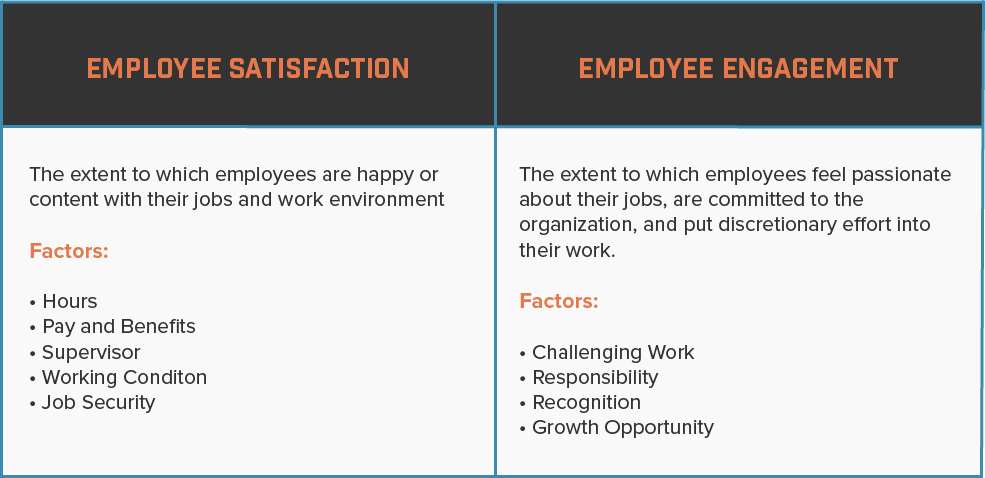
You’ve got unlimited coffee, a generous benefit package, team-building activities and an office space that can put Google to shame. So why are your employees not as engaged as you’d expect?
Let’s start with some numbers from recent studies:
Why does employee engagement matter?
According to the Society of Human Resource Management, employee engagement has the potential to significantly affect employee retention, productivity and loyalty, and is a key link to customer satisfaction, company reputation, and overall stakeholder value.
Employee engagement is not to be confused with employee satisfaction. While employee satisfaction is measured by job characteristics, not work characteristics. For example, job satisfaction gauges an employee's contentment with pay, benefits and work schedule, but employee engagement measures the connection a person has with work they perform.
While engagement can be affected by many factors in the workplace, a primary cause of disengagement is feeling like ideas aren’t being heard and that the work being performed isn’t meaningful.

How to Combat Disengagement
Simply put, employees thrive in environments that focus on making them more valuable assets.
An obvious aid in creating engaged and valuable employees is internal training, which is proven to increase productivity, efficiency, and innovation. According to the Association for Talent Development, companies that offer training programs have 218% higher income per employee than companies without formalized training.
Employee retention is higher when people believe that opportunities exist in an organization and that leadership is willing to invest in mutual success. People want the opportunity to grow— professional growth increases the chance for greater workplace and financial success.
Every organization should have a unique learning strategy that aligns directly with specific business objectives and job roles. In the wake of the Digital Transformation, organizations are emphasizing the need to hone soft skills— skills like communication, collaboration and customer service— to help drive business forward. Cultivating an understanding of certain products, topics or industry-knowledge is another major benefit of Learning & Development that can aid in lead generation or help increase a positive ROI (while challenging and engaging the workforce).
These Stories on Learning Strategy
As the word echoed in the boardroom, all eyes turned to Klara, the new VP of ...
Quick poll: Raise your hand if you like taking compliance training.
I can’t see you, ...
Imagine a mid-sized consumer packaged goods (CPG) company — let’s call them “FreshBite” — facing a critical challenge: Mid-level managers, many of whom were first-time ...
Copyright © 2025 Ardent Learning Inc. All Rights Reserved.